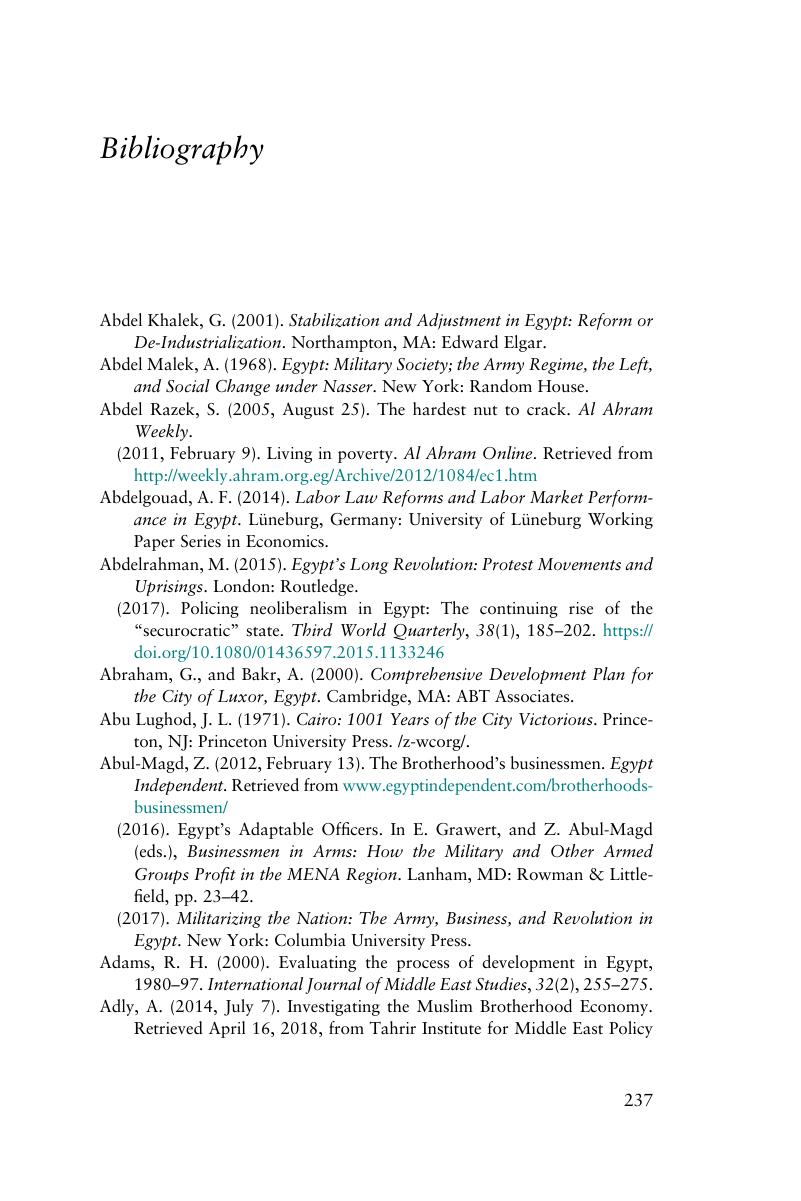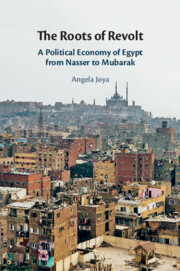Book contents
- The Roots of Revolt
- The Roots of Revolt
- Copyright page
- Contents
- Figures and Tables
- Acknowledgements
- 1 Neoliberal Authoritarianism in Contemporary Egypt
- 2 The Developmentalist State and the Market Economy
- 3 “We Need the Government to Unleash Us, the Tigers”
- 4 “We Feed the Nation”
- 5 The Mosque and the Market
- 6 “Strike like an Egyptian”
- 7 “You Let the Dogs Eat the Peasants”
- Conclusion
- Bibliography
- Index
- References
Bibliography
Published online by Cambridge University Press: 13 March 2020
- The Roots of Revolt
- The Roots of Revolt
- Copyright page
- Contents
- Figures and Tables
- Acknowledgements
- 1 Neoliberal Authoritarianism in Contemporary Egypt
- 2 The Developmentalist State and the Market Economy
- 3 “We Need the Government to Unleash Us, the Tigers”
- 4 “We Feed the Nation”
- 5 The Mosque and the Market
- 6 “Strike like an Egyptian”
- 7 “You Let the Dogs Eat the Peasants”
- Conclusion
- Bibliography
- Index
- References
Summary

- Type
- Chapter
- Information
- The Roots of RevoltA Political Economy of Egypt from Nasser to Mubarak, pp. 237 - 268Publisher: Cambridge University PressPrint publication year: 2020



